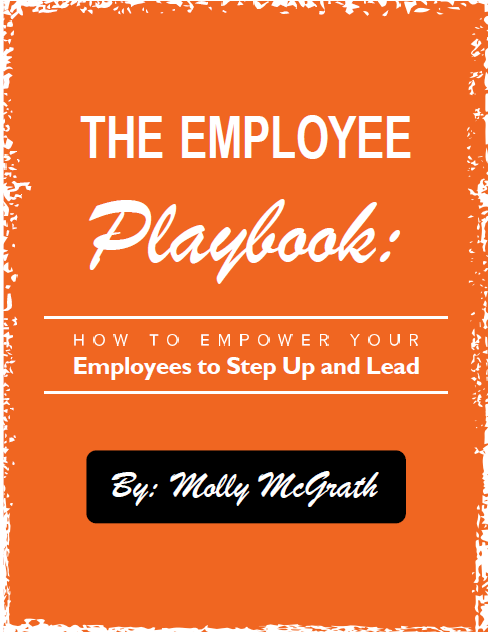Building boundaries starts with recognizing you’re in emotional bondage, which occurs due to a lack of truth-telling – when we don’t say what we need to say.
Emotional bondage results when we violate our own boundaries and fail to be clear on what our boundaries are, when we are not in alignment with a person or people around us. The suffering in (thundering) silence begins. We avoid the “real” conversations we need to have. We then begin to feel like we are backed into a perpetual time-out corner.
 Such situations are the breeding ground of volatile meltdowns, which won’t look the same for everyone. Sometimes people shut down, they quit and/or leave, or they have a massive blow up. Whatever form you tend to gravitate toward, the people around you feel confused and unsafe because you are not fully showing up. They are at a standstill coping with your thundering silence or emotional recklessness, neither of which is effective.
Such situations are the breeding ground of volatile meltdowns, which won’t look the same for everyone. Sometimes people shut down, they quit and/or leave, or they have a massive blow up. Whatever form you tend to gravitate toward, the people around you feel confused and unsafe because you are not fully showing up. They are at a standstill coping with your thundering silence or emotional recklessness, neither of which is effective.
Whether you choose to put yourself in a self-selected time out and interact minimally, or if you react and blow up, there is aftermath. Maybe you’re the sacrificial lamb, where you want to support the other person’s goals, dreams, etc., or maybe you’re the “coach” who pushes.
How do you find the sweet spot? It starts with setting boundaries as a way of caring for yourself without coming off as arrogant, dictating or uncaring.
Boundaries are essential to healthy relationships and, really, to a healthy life. Setting and sustaining boundaries is a skill. Unfortunately, it’s a skill many of us don’t learn, according to psychologist and coach Dana Gionta, Ph.D. http://www.danagionta.com/ We might pick up pointers here and there from experience or through watching others. But for many of us, boundary-building is a relatively new and challenging concept.
Having healthy boundaries means “knowing and understanding what your limits are,” Dr. Gionta said. Below she offers insight into building better boundaries and maintaining them.
- Name your limits: You can’t set good boundaries if you’re unsure of where you stand. So identify your physical, emotional, mental and spiritual limits, Gionta said. Consider what you can tolerate and accept, and what makes you feel uncomfortable or stressed. Make an actual list identifying limits in each area.
- Tune in: Two key feelings in others that are red flags or cues that we’re letting go of our boundaries are discomfort and resentment. Gionta suggests thinking of these feelings on a continuum from 1 to 10, with 6 to 10 being the higher zone. If you’re at the higher end of this continuum during an interaction or a situation, Gionta suggests asking yourself, what is causing that? What is it about this interaction, or the person’s expectation, that is bothering me? Resentment usually “comes from being taken advantage of or not appreciated.” It’s often a sign that we’re pushing ourselves either beyond our own limits because we feel guilty, or someone else is imposing their expectations, views or values on us. “When someone acts in a way that makes you feel uncomfortable, that’s a cue to us they may be violating or crossing a boundary,” Gionta said.
- Be direct: With some people, maintaining healthy boundaries doesn’t require a direct and clear-cut dialogue. Usually this is the case if people are similar in their communication styles, views, personalities and general approach to life. They’ll “approach each other similarly.” With others, you’ll need to be more direct about your boundaries. Consider the following example: One person feels [that] challenging someone’s opinions is a healthy way of communicating, but to another person this feels disrespectful and tense.
- Give yourself permission: Fear, guilt and self-doubt are big potential pitfalls, Gionta said. We might fear the other person’s response if we set and enforce our boundaries. We might feel guilty after speaking up or saying no to a family member. Many believe they should be able to cope with a situation or say yes because they’re a good daughter or son, even though they “feel drained or taken advantage of.” We might wonder if we even deserve to have boundaries in the first place. Boundaries aren’t just a sign of a healthy relationship; they’re a sign of self-respect. So give yourself the permission to set boundaries and work to preserve them.
- Practice self-awareness: Again, boundaries are all about homing in on your feelings and honoring them. If you notice that you are slipping and not sustaining your boundaries, Gionta suggests asking yourself: What’s changed? What I am doing or [what is] the other person doing? What is the situation eliciting that’s making me resentful or stressed? Then, mull over your options: Ask yourself what you are going to do about the situation. What do you have control over?
- Make self-care a priority: You must start by giving yourself permission to put yourself first. When we do this, “our need and motivation to set boundaries become stronger,” Gionta said. Self-care also means recognizing the importance of your feelings and honoring them. These feelings serve as “important cues about our well-being and about what makes us happy and unhappy.” Putting yourself first also gives you the “energy, peace of mind and positive outlook to be more present with others and be there” for them. “When we’re in a better place, we can be a better wife, mother, husband, co-worker or friend,” she said.
- Be assertive: Of course, we know that it’s not enough to create boundaries; we actually have to follow through. Even though we know intellectually that people aren’t mind readers, we still expect others to know what hurts us, Gionta said. Since they don’t, it’s important to assertively communicate with the other person when they’ve crossed a boundary. In an honest but respectful way, let the other person know what in particular is bothersome to you and that you can work together to address it, Gionta said.
- Start small: Like any new skill, assertively communicating your boundaries takes practice. Gionta suggests starting with a small boundary that isn’t threatening to you, and then incrementally increasing to more challenging boundaries. “Build upon your success, and [at first] try not to take on something that feels overwhelming.”
Setting boundaries takes courage, practice and support. And remember that it’s a skill you can master. If you’re struggling with how to set boundaries, click here and schedule a complimentary 30-minute call so we can support you with building boundaries in the workplace.
Molly Hall

